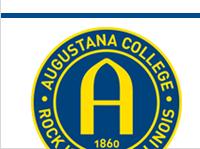Course
Geography Senior Inquiry
Document Type
Student Paper
Publication Date
2014
Disciplines
Biodiversity | Entomology | Environmental Indicators and Impact Assessment | Hydrology | Water Resource Management
Description, Abstract, or Artist's Statement
Streams have been degrading in quality since the introduction of impervious surfaces. Water concentrations have been altered as sediment and other pollutants have been introduced from severe erosion from runoff. As the water continues to change, the biotic integrity becomes disturbed. More specifically, aquatic invertebrate populations begin to change. More organisms that can tolerate poor quality streams are thriving as organisms that can only tolerate high quality streams are beginning to run thin. This study strives to find a spatial relationship between impervious surfaces around Rock Island and Moline, Illinois and the water quality within the streams by looking at aquatic invertebrate samples. It also hopes to find a correlation between population density and species richness from the samples collected. The results showed that a majority of the streams had poor quality (33 sites out of 42) and a decrease in richness of each site correlated with an increase in population density around it (p-value of 0.0192).
Augustana Digital Commons Citation
Noonan, Kara. "Impact of Impervious Surfaces on Water Quality by Measurement of Macroinvertebrates in Rock Island and Moline, Illinois" (2014). Urban Watershed Project.
https://digitalcommons.augustana.edu/urbanwatershed/1
Included in
Biodiversity Commons, Entomology Commons, Environmental Indicators and Impact Assessment Commons, Hydrology Commons, Water Resource Management Commons

